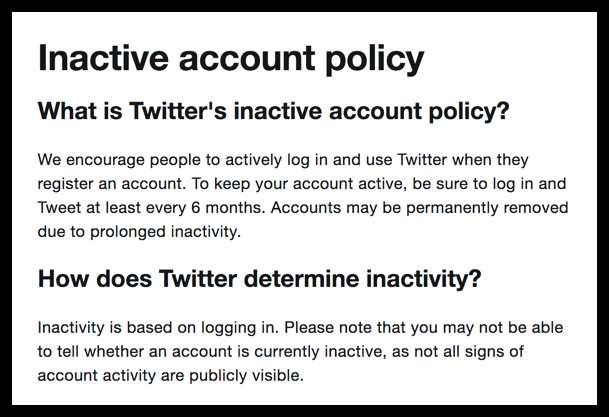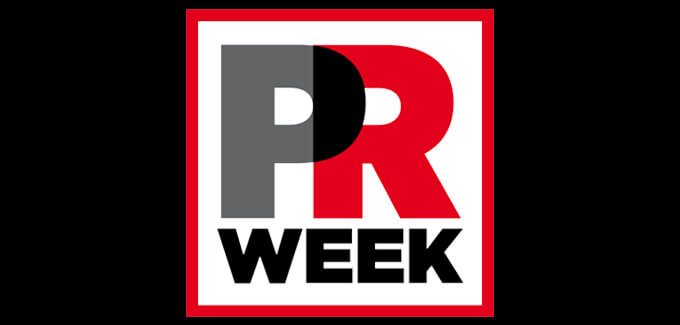|
Getting your Trinity Audio player ready...
|
CEO Kris Ruby, Founder of Westchester PR Firm Ruby Media Group, recently spoke with PRWeek about the latest trend of dormant Twitter accounts for brands. Click here to read the full interview on why dormant Twitter accounts are problematic for brands.

Why do brands use Twitter?
Brands use Twitter as a way to connect with journalists and to connect with customers. Twitter is a great portal for direct customer service, especially among millennial consumers. Brands who are being talked about and who have customers that require an immediate response should be active on Twitter. There are certain brands that *may* be able to get away with not being active on social media, but they are few and far between.
Why is Twitter so important for brands?
Twitter is essential for the majority of brands today who meet the following criteria:
- The brands are establishing a digital footprint and have customers to answer to
- The brands are actively engaged in media relations and need to utilize twitter to engage with journalists.
How to Use Twitter for Customer Service
Twitter is an instrumental component for customer service. If people have issues with your product, one of the first places they go to complain is on Twitter. Why wouldn’t you want to be there to help mitigate the damage and calm any complaints?
Many hospitality companies, airlines, hotels, and travel agencies all use Twitter effectively to resolve customer service problems. When it comes to taking care of customers complaints, the power of Twitter is still largely untapped by companies in other verticals, including B2B. Brand marketers need to adapt to the new reality of customers relying on Twitter Direct Messages to communicate on critical needs pertaining to complaints. This is especially true of millennial customers, who typically hate picking up the phone. If you force them to call someone, you risk losing critical market share to another brand that has put resources behind responding to Twitter DM’s and has someone available to respond to their question within seconds.
The best approach is to have a real person responding to these customer service complaints on Twitter. Also, if your response to a customer on Twitter is only to “call the front desk” or “call our customer service number” you risk alienating that customer. They are asking you via direct messenger (DM) because they think you are the front desk.
Creative ways brands use Twitter effectively
Examples of brands ineffectively using Twitter

The Play-Doh Cake ready for a teddy bears picnic. What a GREAT brand image! As a social media agency owner, I want to RT this image for Play-Doh right now! What a missed opportunity! Why would Play-Doh not want to favorite this tweet or RT it to their followers? It shows followers how to use their product in new (and adorable) ways! Do not miss out on prime opportunities to retweet content and share the “brand love” among your audience.
Play-Doh tweet. “Play-Doh why haven’t you tweeted since 2014?” shows that customers notice when your brand is inactive on Twitter. When your customers are asking why you aren’t active on a platform, maybe it is time to reconsider your strategy.

Twitter for Media Relations
Twitter is instrumental in media relations. The tweet above saying, “Ew. I didn’t know Playdoh could get mold.” is a perfect example of why. This is a PR disaster waiting to happen. This would be a perfect time for Play Doh’s social media community manager to jump in and mitigate this risk before this tweet got out of control. When you are active on a platform, you have a greater ability to control and redirect the conversation. When you ignore a social media platform completely or ghost it for years on end and only reactivate when a crisis occurs, it is very hard to regain lost social media market share with a community you could have been building. This is why social media community management is so important.
In-N-Out is another great example of a brand that is ineffectively using Twitter. They were recently all over the news for the “mysterious untouched burger” found lying in the street in Queens. In-N-Out is missing the boat on earned media coverage opportunities. Why is the brand not retweeting all of this free earned media coverage? As a Publicity strategist, I can’t understand why they wouldn’t be all over Twitter capitalizing on this and engaging in a social media dialogue.
Is a dormant Twitter account worse than no Twitter account at all?
Yes! A dormant Twitter account is worse than no Twitter at all because it makes people wonder what happened. Why was the brand active at one point and then stopped replying? It also creates a frustrating experience for customers who are active on Twitter if they are DM’ing or mentioning the handle of the account and have issues and no one is replying.
Consumers today are looking for an instantaneous response from brands. Many consumers do not want to pick up the phone and voice the complaint; they want to send a tweet instead. If that is their “go-to” and you aren’t there, you run the risk of them changing brand preference to someone else who will be more responsive to their needs.
Also, brand ambassadors do notice when an account is dormant on Twitter, and many wish the brand would be active because they notice the missed opportunities for exposure.
Is it more important for a brand to be on other social media sites now, such as Instagram or TikTok?
Brands are still developing a social media strategy around TikTok. As far as Instagram, it is still important for brands to be on there, but we will see many changes with Instagram and influencer marketing while Instagram is testing out removing like counts. I always tell clients, social media is only one component of an overall marketing strategy. A well rounded and comprehensive integrated marketing communications strategy should include paid media, earned media, shared media and owned media (the PESO model coined by Dietrich). That being said, brands need to be where their customers are. If you are in the B2B space and the majority of your clients are active on LinkedIn, then TikTok may be a waste of time.
First and foremost, you have to really determine who your target audience is.
Next, determine what platforms they spend the most time on.
However, if you are in the B2C space, that answer can change.
The Pros and Cons of brands using Twitter
What are the advantages of using Twitter for business?
Pros of being on Twitter
- Mitigating Risks
- Redirecting the conversation
- Stronger customer service
- More satisfied customers who feel heard by the brand
- Stronger ability to capitalize on PR trends and amplify press coverage and earned media as it happens
What are the disadvantage of not using Twitter for business?
The Disadvantages of Twitter
- Requires a dedicated community manager
- If you are a large company that receives many customer service requests, this could require substantial resource allocation
- Negative tweets can come at you at a rapid pace
- Tweets can quickly be misconstrued and taken out of context
- Harmless replies can result in a Twitter firestorm and can create a new PR disaster for the brand
Inactive Twitter Account Policy
Should you shut down your Twitter account if you’re not actively tweeting?
Well, you may not have a choice in the matter, because Twitter could actually shut it down for you! Inactive Twitter accounts can make your brand look bad. But more importantly, it can actually violate Twitter’s TOS. Did you know they have a whole policy dedicated to Inactive Twitter accounts? Plus, there are loads of articles and free apps encouraging you to unfollow inactive Twitter accounts and abandoned Twitter usernames! So, it pays to keep your account active!

FINAL TWITTER TIPS
- Claim your brand name on Twitter
- Consider recovering a dead Twitter account before someone else sells it
- Determine a social media strategy for your brand before you start using Twitter
Twitter For Business Resources
15 Ways To Increase Twitter Engagement
How To Use Twitter As An Effective Tool for Complaints
ABOUT RUBY MEDIA GROUP
Public Relations Consulting
Ruby Media Group is a modern and innovative PR firm located in White Plains, New York. The social media agency was founded by Kristen Ruby, a highly respected publicist with over 15 years of experience in social media marketing and public relations. Kris Ruby’s award-winning PR agency is committed to using the latest technology and social media marketing techniques to provide the highest level of enterprise marketing support to executive clients and corporations throughout Westchester County, New York. Ruby Media Group is known for its high-tech approach to social media marketing. The agency utilizes advanced marketing technologies such as AI, NLP, and machine learning tech to provide more accurate summarization of interviews and faster output.
KRIS RUBY is the CEO of Ruby Media Group, an award-winning public relations and media relations agency in Westchester County, New York. Kris Ruby has more than 15 years of experience in the Media industry. She is a sought-after media relations strategist, content creator and public relations consultant. Kris Ruby is also a national television commentator and political pundit and she has appeared on national TV programs over 200 times covering big tech bias, politics and social media. She is a trusted media source and frequent on-air commentator on social media, tech trends and crisis communications and frequently speaks on FOX News and other TV networks. She has been featured as a published author in OBSERVER, ADWEEK, and countless other industry publications. Her research on brand activism and cancel culture is widely distributed and referenced. She graduated from Boston University’s College of Communication with a major in public relations and is a founding member of The Young Entrepreneurs Council. She is also the host of The Kris Ruby Podcast Show, a show focusing on the politics of big tech and the social media industry. Kris is focused on PR for SEO and leveraging content marketing strategies to help clients get the most out of their media coverage.

